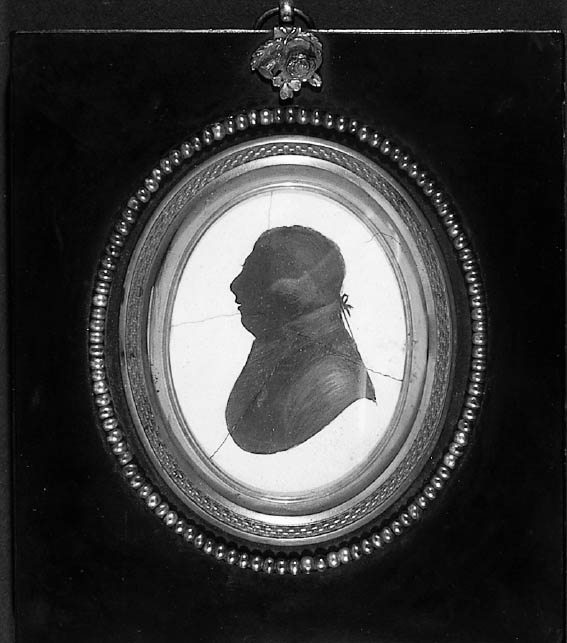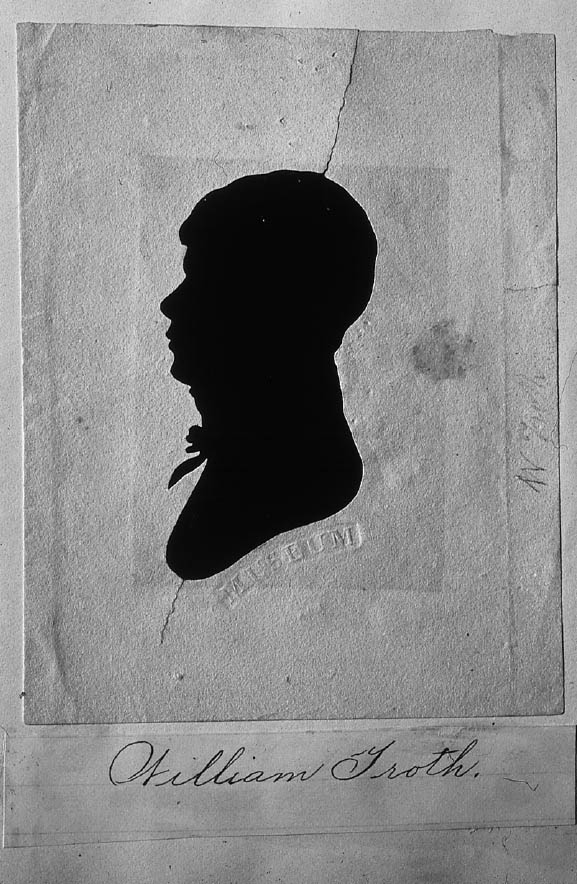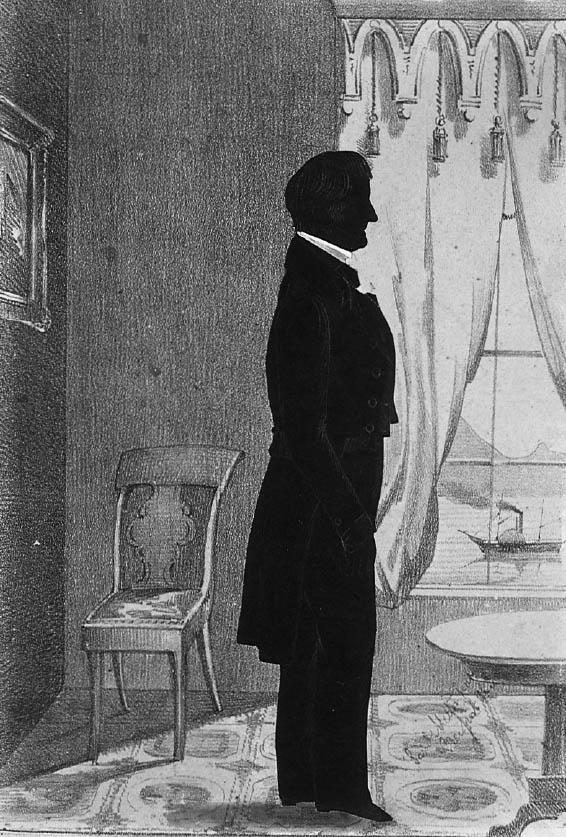PAPER PROFILES: AMERICAN PORTRAIT SILHOUETTESPENLEY KNIPE
2 TYPES OF SILHOUETTESIt is useful to be able to identify and describe the various silhouette types. Silhouettes that are drawn or painted (usually in black) onto a substrate are called, simply, a “silhouette” (fig. 1). As an example, a bust painted in black ink on a piece of paper or plaster falls into this category. “Hollow-cut silhouettes” refer specifically to silhouettes cut from a piece of paper, usually light colored, so that the middle—the positive—drops away, leaving the negative—the outside of the image—to be backed with dark paper or fabric (fig. 2). Alternatively, silhouettes in which the image
Those objects that show evidence of having been traced using a device with graphite or a metal point are described as “with graphite tracing” or “with stylus tracing.” Silhouettes decorated with gold or inked-in hair are described as “with gold color” or “with black ink.” If the paper used is known to be painted or coated or is particularly matte or glossy, that information is also included. Descriptions of objects can be rather long and complicated. The description of a typical hollow-cut silhouette might read: hollow-cut bust silhouette from beige wove paper with graphite tracing and black ink, backed with matte, black-coated, white wove paper. In addition to type and media, a third important facet of silhouette description is format. Silhouettes, like portrait sculpture, are usually either busts or full-figure. Hollow-cuts are always bust length, whereas silhouettes and cutouts are found in both formats. There are “conversation piece” silhouettes, which show a group, such as a family, in a customary setting like a drawing room (fig. 4). Such scenes were popular oil painting subjects in the 18th century. In silhouettes, conversation pieces are composed of individually cutout full-figure silhouettes as well as the cutout accessories of domestic life, including chairs, tables, toys, and books.
|


